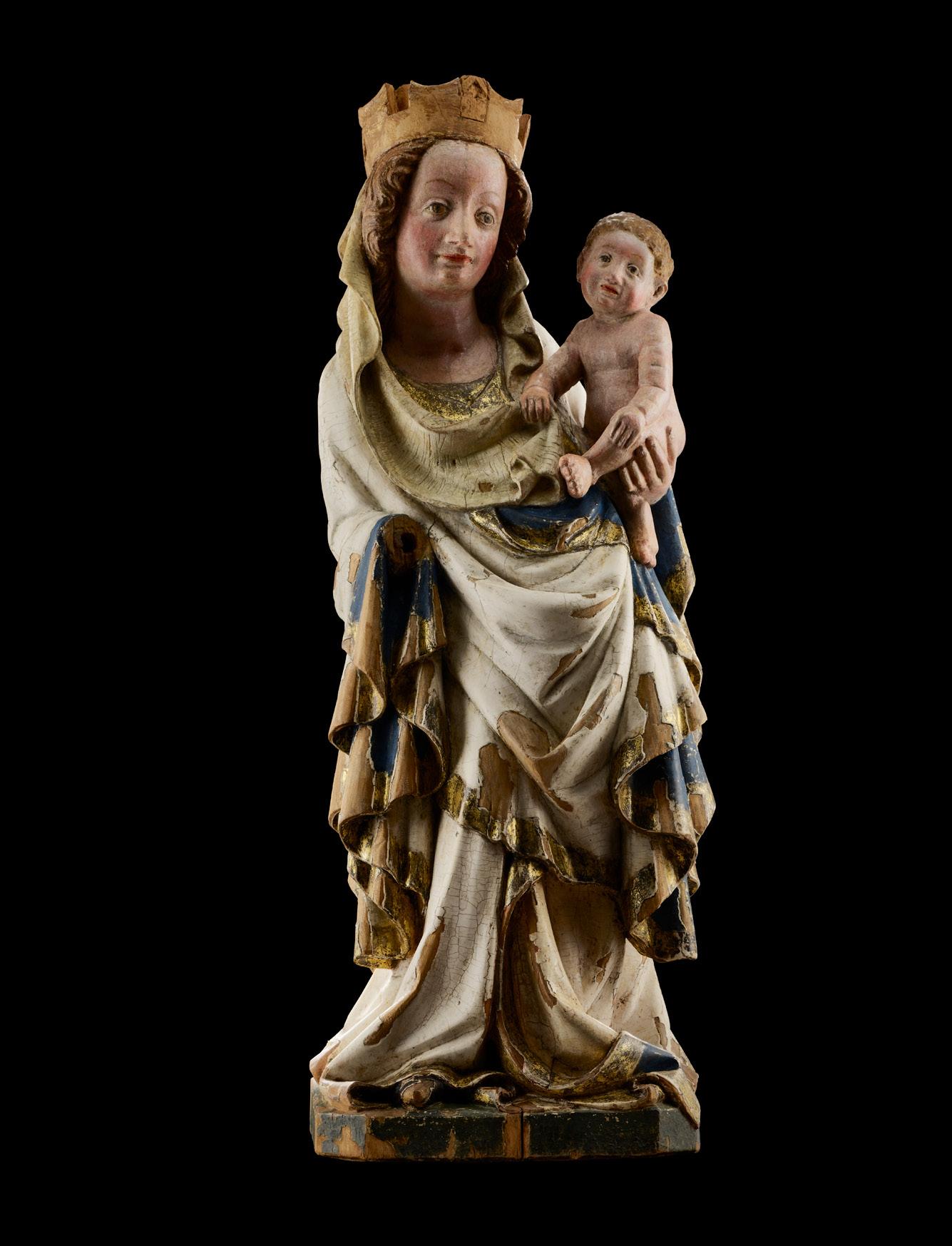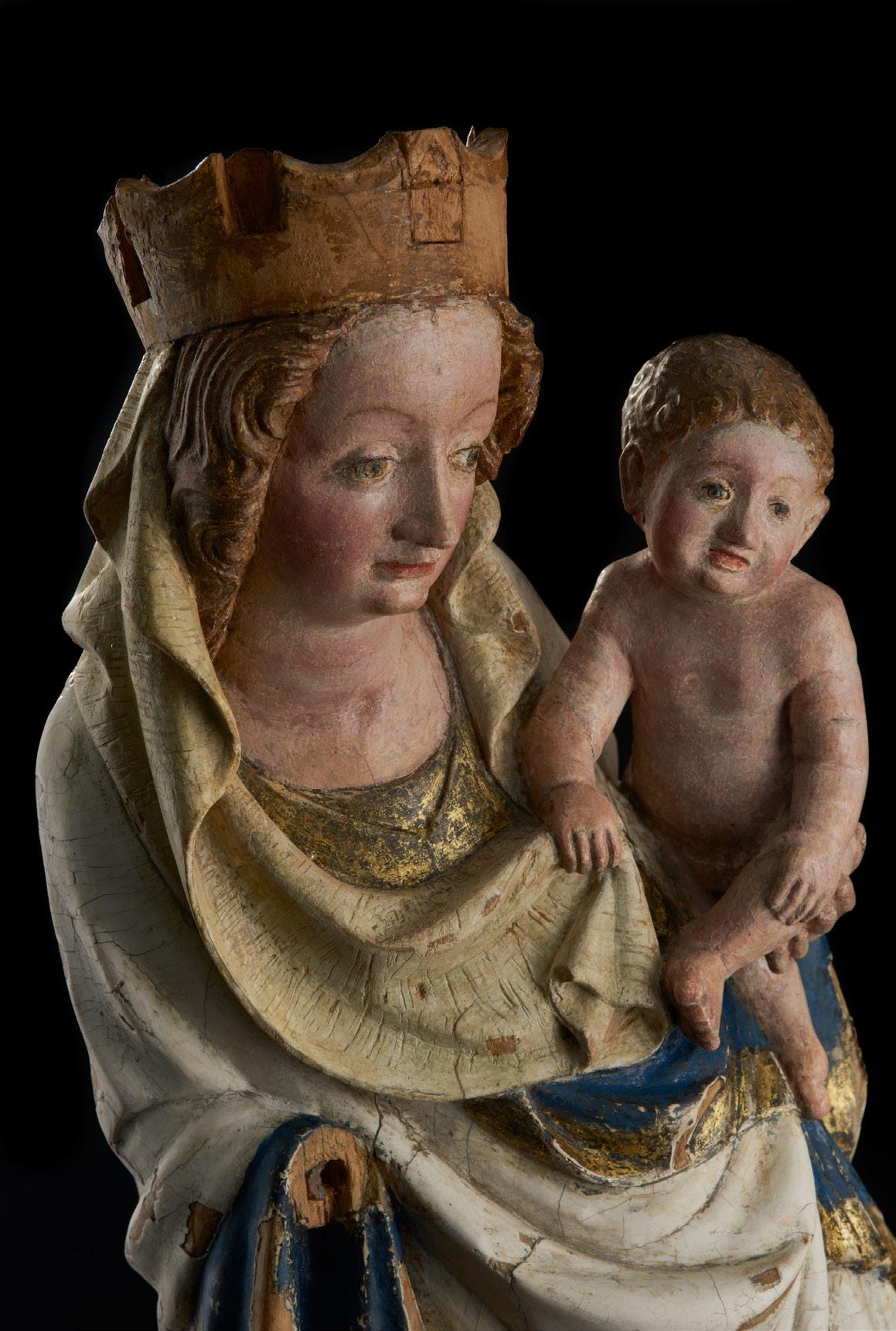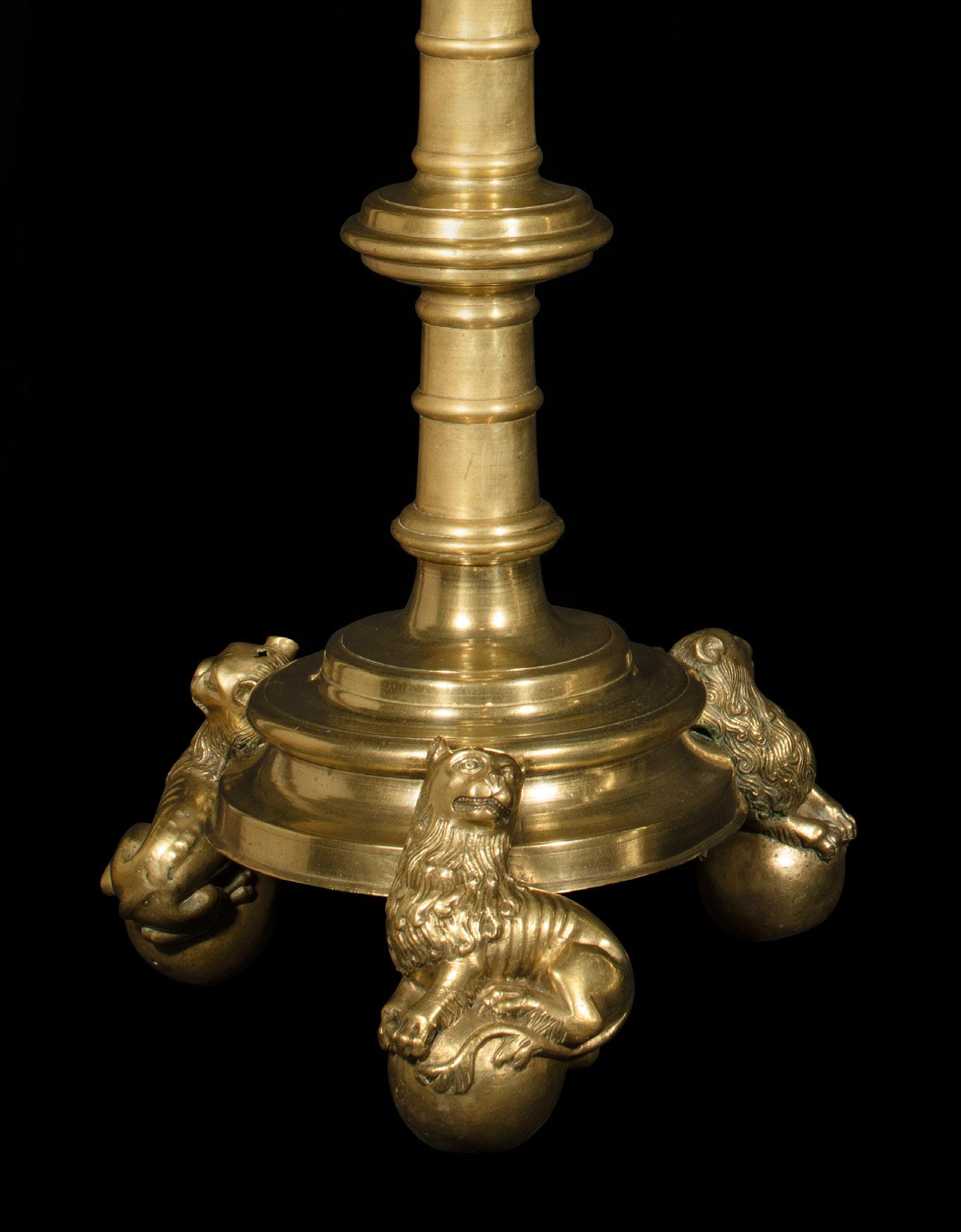
3 minute read
06 „Schöne“ Madonna
from JB Test 01/22
“SCHÖNE” MADONNA
Georg Petel 1601/2 Weilheim – 1634 Augsburg, attributed to
Advertisement
Boxwood Height: 29.8 cm
Related Literature: Schädler, Alfred; Lieb, Norbert; Müller, Theodor. Georg Petel, 1601/2–1634, Berlin 1973 Georg Petel, 1601/02 – 1634. Bildhauer im Dreißigjährigen Krieg, exh. cat., Munich 2007
Krempel, León and Söding, Ulrich. Georg Petel. Neue Forschungen, (eds.), Munich 2009 Not far from Bamberg is the former summer residence of the prince- bishops, the beautiful palace known as Schloss Seehof. It is an impressive testimony to the once so impressive court upheld by the bishopric and, at the same time, it is the artistic legacy of one of the greatest Rococo artists of southern Germany, Ferdinand Tietz, who originally came from Bohemia.
Born in Holešice, probably in 1708, as Ferdinand Dietz, he later changed the spelling of his surname to ‘Tietz’. He came from a family of craftsmen; his father was a sculptor and had a workshop in Jezerí. Although Ferdinand was later to become a successful sculptor there is no documentary evidence covering the first third of the artist’s lifetime. He most probably went to Vienna where he met the sculptor Johann Wolfgang von der Auwera (1708 – 1756), as stylistic parallels reveal. It is not until 1736, when he was twenty-eight years old, that the artist is mentioned in archival records. He worked under Balthasar Neumann (1687 – 1753) on large projects in the Würzburg Residenz, as shown on various invoices. In 1747 Tietz was summoned to Bamberg by Prince- Bishop Johann Philipp Anton von Franckenstein (1695 – 1753) who commissioned him to devise a comprehensive plan of figures for the park at Schloss Seehof. This project represents the highlight of the park’s overall design and Tietz’s artistic breakthrough. Together with his workshop, Tietz – who was appointed court sculptor in 1748 – completed some 400 masterly worked and powerfully modelled sculptures of playfully exuberant figures captured in motion. They were to make the artist famous well beyond the region.1
In 1754 Tietz was called to Trier by the prince-bishop Franz Georg von Schönborn (1682 – 1756) and did not return to Bamberg until 1760 where, in the meantime, Adam Friedrich von Seinsheim (1708 – 1779), Prince-Bishop of Würzburg, had taken over the princebishopric office in Bamberg as well, as the position had become vacant.
06
1 Today, only a small number of figures are to be seen. 2 Painted à la porcelaine, the stone sculptures would have had the appearance of painted china figures.
06
The model for a garden figure was most probably once painted. 3 It is similar to an allegory of summer that Tietz made in 1765/67 for the court garden at Veitshöchheim in which the motif of the kneeling peasant woman with a gift of grain also appears. The small putto, however, is not included and the goddess is clothed. The virtuosity and dynamism of the small sculpted work are lacking; instead the garden figure exudes a calm majesty. In the case of the garden figure Tietz also eschewed the sensually erotic aesthetic and gleeful exuberance that characterise the model, presumably at the request of the patron.
The extreme rotation of Ceres’ body and the crossing of her legs as if dancing, can similarly be found in the figure of Pan. The god of shepherds was one of the figures in Tietz’s cycle of gods that he made in 1760 for the Rose Garden in Bamberg. The extreme rotation of Ceres’ body and the crossing of her legs as if dancing, can similarly be found in the figure of Pan. The god of shepherds was one of the figures in Tietz’s cycle of gods that he made in 1760 for the Rose Garden in Bamberg. Due to the work’s high artistic quality and taking stylistic comparisons into consideration we assume that this model is a work by Ferdinand Tietz himself. In all probability, the Ceres group served as a model for the Allegory of Summer in the garden at Veitshöchheim.
3 Hans-Peter Trenschel, the former director of the Mainfränkisches Museum in
Würzburg emphasises that, in Tietz’s case, sketches did not play a role in the creative process of a sculpture. Instead, he generally carved small wooden figures immediately before, in preparation for his work on the stone figures (F. Tietz Symposium, Bamberg,

Two Pairs of Candlesticks with Lion Feet

07












